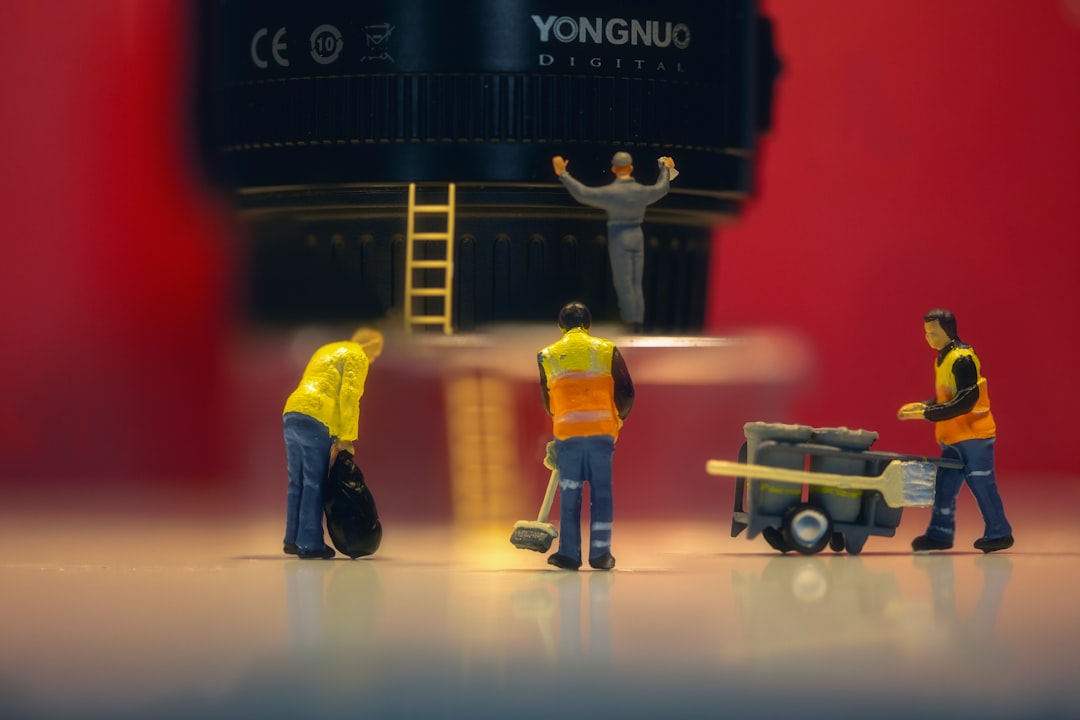

Engage prospects with a scan and streamline customer engagement with FREE QR code marketing tools by Sona – no strings attached!
Create a Free QR CodeFree consultation

No commitment

Engage prospects with a scan and streamline customer engagement with FREE QR code marketing tools by Sona – no strings attached!
Create a Free QR CodeFree consultation

No commitment
For commercial HVAC contractors, empowering technicians in the field is a top priority. Yet traditional methods of communication, documentation, and lead capture are often slow, manual, and prone to costly errors. Paper-based processes and incomplete data collection can result in overlooked service opportunities and slow responses for urgent requests, while high-value prospects may never formally convert leads to deals. Printed maintenance checklists, handwritten service forms, and scattered customer records commonly dominate, leading to inefficient asset management, untapped business, and missed follow-ups.
Today's customer expectations for seamless digital experiences and fast, transparent service make it risky for contractors to rely on outdated methods. Untracked anonymous visitors and incomplete records in the CRM leave revenue on the table and hide valuable signals about real buyer intent or upsell opportunities. QR codes are rapidly emerging as a powerful tool, as covered in Sona QR’s QR marketing guide, enabling instant access to critical information, automating routine processes, and closing the gaps between technicians, office teams, and customers. With comprehensive tracking and analytics, contractors can surface previously hidden engagement, identify decision-makers, and improve both technician enablement and marketing precision.
This guide explores practical QR code marketing strategies for commercial HVAC, focusing on everyday field challenges. You will find tactics to help capture vital customer data, empower field teams for success, and unlock business growth once out of reach. By integrating QR codes with asset tracking, analytics, and CRM workflows, your business can drive operational excellence and reveal new revenue streams through smarter, connected field experiences.

In the commercial HVAC industry, key opportunities are often lost because vital information remains trapped in manual, fragmented workflows. Technicians in the field may struggle to locate up-to-date service manuals or spend precious time documenting jobs on paper, leaving data entry for later and risking form errors or lost records. More critically, high-potential customer interactions frequently go unrecorded, missing out on valuable insights for follow-up or account growth.
Modern QR code solutions bridge these gaps. Technicians can scan assets to access live documentation, submit job completion reports on-site, or trigger next-step workflows that feed real-time data to your CRM. This streamlines routine operations and ensures high-value prospects and engagement signals are captured and enriched. By placing QR codes directly on equipment, job site signage, and even inventory bins, contractors can transform offline actions into trackable digital events.
With robust analytics from platforms like Sona QR, you can monitor adoption, identify operational bottlenecks, and connect field interactions to measurable business outcomes. Scans become signals that inform technician coaching, resource allocation, and account strategy, while creating a unified record across teams.

Commercial HVAC contractors are continually challenged by the complexities of distributed assets, onboarding new techs, and ensuring no prospect or customer engagement signal is missed. Lack of visibility into who interacts with your brand, assets, or field forms means that valuable business often slips by. Anonymous browsers, abandoned form fills, and unreported service interest can add up to lost revenue. The stakes rise when multi-site customers expect rapid response and digital transparency.
QR codes directly address these problems with a simple scan that activates digital workflows. For HVAC-specific applications, see HVAC QR codes. Contractors can meet modern expectations for speed, accuracy, and traceability, without requiring app downloads or complex onboarding. You can use them on equipment, invoices, proposals, and job site signage to convert interest into action on the spot.
In short, QR codes make every surface scannable and every scan measurable. That combination gives commercial HVAC teams an agile, data-driven way to improve field productivity, customer experience, and revenue.
Selecting the right QR code format is essential. The wrong approach can perpetuate workflow silos or introduce dead ends. For many HVAC contractors, the failure to digitize vital forms or make information instantly accessible can mean demo interest goes unconverted, or leads fade after a technician visit. A thoughtful format strategy lets you match intent to destination with minimal friction.
Effective formats include:
Use dynamic QR codes to enable centralized tracking, version control, and destination updates without reprinting. Static codes can be useful for simple, unchanging resources such as a general safety handbook PDF, but most operational and marketing scenarios benefit from dynamic control and analytics.
Many commercial HVAC contractors discover that lucrative deals and upsell opportunities go unrealized because engagement signals are not captured or acted on in time. Service interactions, proposal reviews, and post-installation check-ins can become administrative afterthoughts. QR codes create new growth opportunities by embedding data capture and engagement triggers into high-impact field and customer touchpoints.
Analyzing code placement and scan behavior helps you optimize messaging and resource allocation. Heatmaps and time-of-day patterns can show where projects stall or which property types respond best to certain offers. That knowledge turns neglected touchpoints into consistent revenue streams. Explore how QR-powered direct mail drives conversions.

Untracked service interactions and missed handoffs between the field and the office often result in incomplete customer records and overlooked opportunities. Strategic QR deployment helps commercial HVAC firms uncover and pursue value across the customer lifecycle. Three high-impact use cases consistently deliver results:
Each use case replaces manual bottlenecks with traceable digital steps. As a result, no key event or potential lead falls through the cracks, and teams gain the data needed to make better decisions on staffing, training, and marketing.
A persistent pain point for most contractors is not knowing which decision-makers engage with your service collateral, followed by low-fidelity data for retargeting. Fragmented scan data makes it hard to prioritize time and ad spend. Advanced QR platforms solve this by tagging each engagement with journey context, such as asset type, location, and use case. That context feeds precise follow-up, not one-size-fits-all blasts.
For commercial HVAC, segmenting by role, site type, and engagement intent can dramatically improve conversion rates. When you deploy unique codes across collateral and touchpoints, you automatically build behavior-based audiences and can serve them next-best actions. For execution, see Sona’s retargeting playbook.
Leveraging QR-driven signals ensures even anonymous first touches become actionable. Over time, you can attribute closed revenue to the exact scans and sequences that moved accounts forward.
Commercial HVAC contractors often struggle with fragmented marketing. Offline and online touchpoints do not connect; prospects bounce between channels, and crucial stages of the customer journey go untracked. QR codes unify these efforts by creating a measurable bridge from physical collateral to digital engagement and follow-up.
A connected process improves lead quality and shortens sales cycles. Scans from proposals, events, and site signage flow into a centralized view that marketing and sales can act on. When each code has a clear call to action and is integrated with CRM workflows, you reduce drop-off and improve attribution across the funnel.
With a robust QR management system like Sona QR, every offline engagement feeds directly into marketing automation and sales tracking. You can view performance by channel, test new placements, and allocate budget based on real-world impact.
Well-planned QR campaigns align field realities with business outcomes. Before you print or deploy, define what success looks like, how you will measure it, and who owns follow-up. The steps below are designed for operations leaders, service managers, and marketers who want to move fast without losing control.
Start with a single, high-visibility use case so you can validate adoption, iron out process issues, and demonstrate ROI quickly. Once you have a win, scale to adjacent workflows and sites, using dynamic codes to avoid reprints and to keep content fresh.
Identify a real field or business challenge that QR can simplify. Examples include reducing missed follow-ups on quotes, making asset documentation instantly available on rooftops, or reigniting stalled retrofit deals. Tie the use case to a measurable outcome, such as faster job closeout, higher proposal acceptance, or increased PM contract enrollments. For ideas, browse Sona QR’s use case library.
Document success criteria before launch. For instance, aim to cut job documentation time by 30 percent or to increase post-service review submissions by 20 percent. Clear goals guide design decisions and help teams stay focused on outcomes rather than features.
Choose static or dynamic codes based on flexibility and tracking needs. Static codes suit fixed resources, such as a safety PDF, while dynamic codes support content updates, audience tagging, and analytics. Most operations and marketing programs benefit from dynamic codes to avoid reprints and enable centralized control.
Map each code to a destination tailored to the task. A service tag should go to a maintenance history and form, whereas an invoice code should route to payments, review capture, and a referral prompt. Set routing rules for role-based content if available.
Design with scannability and context in mind. Include a clear call to action like Scan to schedule service or Scan for maintenance history. Use brand colors, a visual frame, and sufficient quiet space around the code. Consider durability factors such as UV-resistant stickers for rooftop units and metal plates for harsh environments.
Field test before broad rollout. Validate scans from multiple angles, distances, and lighting conditions. Confirm content renders well on mobile and that forms are short, accessible, and role appropriate. Testing prevents uncollected engagement and protects data quality.
Start with placements that see frequent traffic from both technicians and customers. Examples include rooftop units, service panels, work orders, technician toolkits, trade show materials, and invoices. Link each placement to a context-specific destination and tracking tag so you can compare performance.
Train your teams on how to introduce and promote scans. Simple scripts help technicians encourage property managers to use codes for scheduling, reviews, and documentation. Reinforcement across channels increases adoption and data coverage.
Monitor adoption and outcomes in a central dashboard. Correlate scan events with business results like quote requests, completed jobs, or revived conversations. Use A/B testing to improve messaging and maximize technician and customer participation.
Integrate with your CRM and FSM so scans automatically enrich records and trigger follow-ups. Over time, use insights to refine placements, simplify forms, and expand to new use cases. Optimization is continuous, and small changes can materially improve outcomes.

One of the most persistent frustrations for commercial HVAC contractors is the lack of end-to-end visibility from initial engagement to deal conversion, especially when scans and field interactions remain detached from sales and marketing systems. Revenue opportunities are lost when high-value accounts interact anonymously, or when technician-driven activity does not surface for timely follow-up. A comprehensive analytics approach fixes that gap and proves value.
With advanced QR analytics, every scan becomes a data point tied to service outcomes. You can observe job completions, new business inquiries, repeat bookings, or re-engagement with previously neglected accounts. Real-time dashboards make it possible to understand performance by channel and context, and to adjust while campaigns run.
Sona QR captures real-world engagement. Sona.com turns that engagement into actionable insights, helping you connect scans to revenue and making QR programs a measurable part of your performance engine.
Scaling QR initiatives requires discipline, education, and a clear feedback loop. After an initial pilot, expand to adjacent departments and use cases while maintaining strong governance. The goal is to build a system where every scan powers a process and every process returns value.
Focus on tips that match your physical media and customer journey. For commercial HVAC, the most effective strategies connect service events, proposals, and billing to automated follow-ups. The following practices consistently improve adoption and ROI.
A creative example: One contractor uses QR-enabled invoices to enable instant payment, capture reviews, and book next-year tune-ups in a single flow. Another places QR-coded lockout tags that link to live procedures and contact info, improving safety compliance and audit readiness.

Many contractors struggle to track inventory accurately, manage service quality across multiple sites, or spot when large accounts are ready for an upgrade. Real-world implementations show how QR-powered transformation delivers measurable outcomes. While results vary, the pattern is consistent: fewer delays, cleaner data, and better follow-through.
Borrow ideas and adapt them to your environment. By starting with a few placements and building from there, you can create a connected network of signals that supports technicians and delights customers.
These examples prove that QR codes are not a gimmick. When thoughtfully deployed and integrated, they become a core part of how commercial HVAC businesses operate, differentiate, and grow.
Even strong QR programs can falter if design, governance, or training are overlooked. The most common issues include poor scannability, generic codes that cannot be attributed, and disconnected workflows that dump data into a void. Address these proactively to sustain momentum and trust. For inspiration, check QR ideas for contractors.
Treat QR codes as part of a living system that spans design, field enablement, data collection, and follow-up. Tight integration with your FSM and CRM reduces manual steps, keeps records clean, and frees teams to focus on service quality and relationships.
QR codes have become a linchpin for commercial HVAC contractors seeking to modernize technician workflows, close engagement gaps, and recover high-value opportunities that would otherwise be lost in manual or fragmented systems. By embedding smart, trackable QR solutions across customer and asset touchpoints, HVAC firms can finally see the full picture. Offline actions become actionable data, high-fit audiences fuel precise marketing, and new pathways to revenue open through better timing and context. Start creating QR codes for free.
QR codes have transformed commercial HVAC contractors from traditional service providers into tech-savvy, efficient problem solvers. By equipping technicians with instant access to equipment data, service histories, and troubleshooting guides through QR codes, companies can streamline maintenance workflows, reduce downtime, and enhance service quality. Imagine technicians arriving onsite fully prepared, resolving issues faster, and boosting customer satisfaction every time.
With Sona QR, you can create dynamic, trackable QR codes in seconds that update instantly without reprinting—ensuring your teams always have the latest information at their fingertips. Every scan provides actionable insights that help optimize technician performance and connect service interactions directly to business growth. No more guessing, just smarter, data-driven operations.
Start for free with Sona QR today and empower your commercial HVAC technicians to deliver faster, smarter service that drives measurable results.
Commercial HVAC contractors provide installation, maintenance, repair, and asset management services for heating, ventilation, and air conditioning systems across commercial properties.
Find a reliable commercial HVAC contractor by evaluating their ability to use modern digital tools like QR codes for efficient communication, documentation, and lead tracking, as well as their integration with CRM and field service management systems.
QR codes enable instant access to live asset information, automate routine processes, improve technician enablement, capture vital customer data, close offline-to-online engagement gaps, and provide comprehensive tracking and analytics to boost operational efficiency and revenue.
Choose contractors who demonstrate operational excellence through technology adoption such as dynamic QR codes integrated with asset tracking, CRM workflows, and analytics that enhance field productivity, customer experience, and measurable business outcomes.
Innovative methods include deploying QR codes on equipment and collateral to digitize maintenance logs and service forms, track customer engagement, automate workflows, enable real-time CRM updates, build targeted marketing audiences, and integrate offline and online touchpoints for unified lead management.
Use Sona QR's trackable codes to improve customer acquisition and engagement today.
Create Your FREE Trackable QR Code in SecondsJoin results-focused teams combining Sona Platform automation with advanced Google Ads strategies to scale lead generation

Connect your existing CRM

Free Account Enrichment

No setup fees
No commitment required

Free consultation

Get a custom Google Ads roadmap for your business






Launch campaigns that generate qualified leads in 30 days or less.
